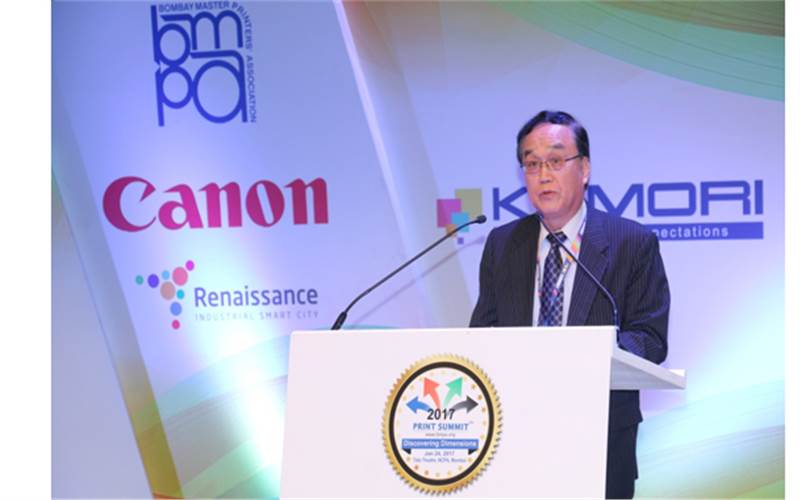Print’s future and challenges
The US economy is considered the leading indicator for the world print market. The Lehman shock towards the end of 2013 hit the US market hard, so did the printing market. “But it is now it is on track to gradual recovery, said Satoshi Mochida President and COO of Komori Corporation Japan. “This means that print market is on the rise in the near future.”
27 Jan 2017 | By Noel D'Cunha
Sharing his insights on where is print going in the future and how Komori is providing solutions to resolve the challenges faced by the printers, Mochida, said, “One key indicator is the increase in printed books. The book stores have increased by around 20% in the last five years, while eBooks continue with it market share of 20%.”
Mochida added, “Direct Mailers had a threat from online marketing – but it continues to grow by 3%.”
The global digital production print market, since 2012 has been expanding, especially, the inkjet printer market. “The major reason for inkjet’s rise is the technical limitation of electrophotography,” said Mochida. “It’s in terms of speed, sheet size and cost that are generally demanded in the market.”
Mochida presented Cimpress Group’s case-study. Cimpress is a Nasdaq listed Netherland-based, world’s largest W2P company, with a turnover of around US D1.8bn and gross profit reached as high as 60%. It is equipped with 10 sets of Komori GL840P+HUV, 4+4 convertible perfecting press with HUV dryers, among other offset and digital presses.
“One will think that this company has succeeded by taking advantage of the emerging W2P market or through M&A, said Mochida. “Their real advantage has come from converting printing into a manufacturing process. He added, “Cimpress thoroughly employs so-called Toyota production system which is not tied with the common sense of the printing industry. They boast very high productivity. The sales per head of their main factory is nearing USD 2-mn.”
Emphasising that Komori’s technology such as the KHS-AI and HUV are the integral factors in Cimpress’ production system, Mochida said, the company has also developed a workflow to optimise the productivity of offset and digital presses.
“I believe that innovation can happen anywhere and so also in India,” said Mochida.
But there are challenges which the Indian print companies must combat. “We analysed the production data of the presses actually running at the printers. The result was shocking and it showed that actual production time is one thirds of total working hour,” Mochida said. “The challenge for the printing company is to finding solutions to the three major factors that are impeding production – machine condition, colour matching, and machine operation and operating procedures.”
Digital printing is fast making inroads and it will be important for the printing companies to integrate both offset and digital printing in future. “While picking up digital solutions, print companies will have to find machines that can print on paper offset machine can print on, so that same quality and colours can be reproduced, as well as integrate into a software that runs the offset machine,” said Mochida.












 See All
See All